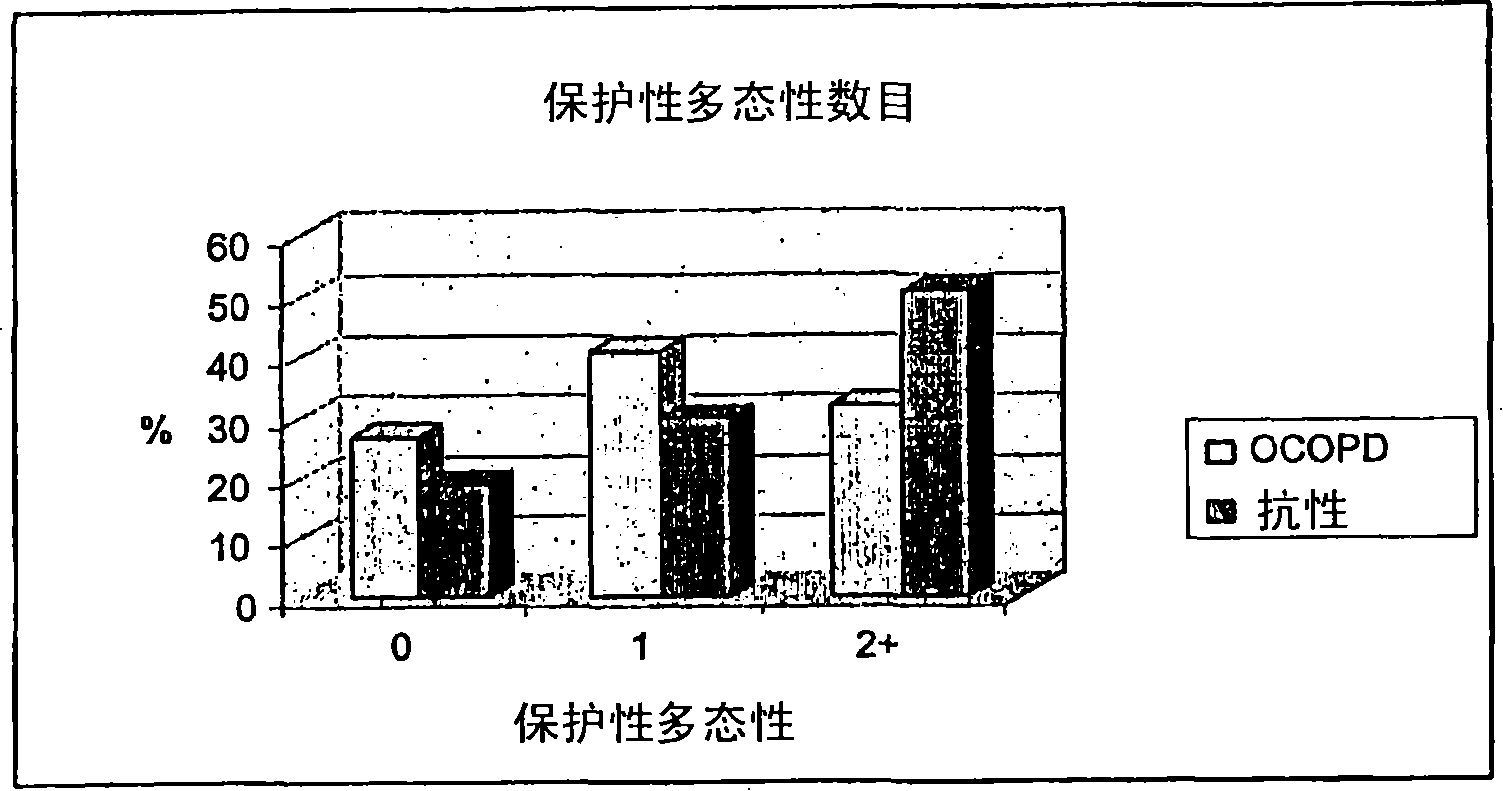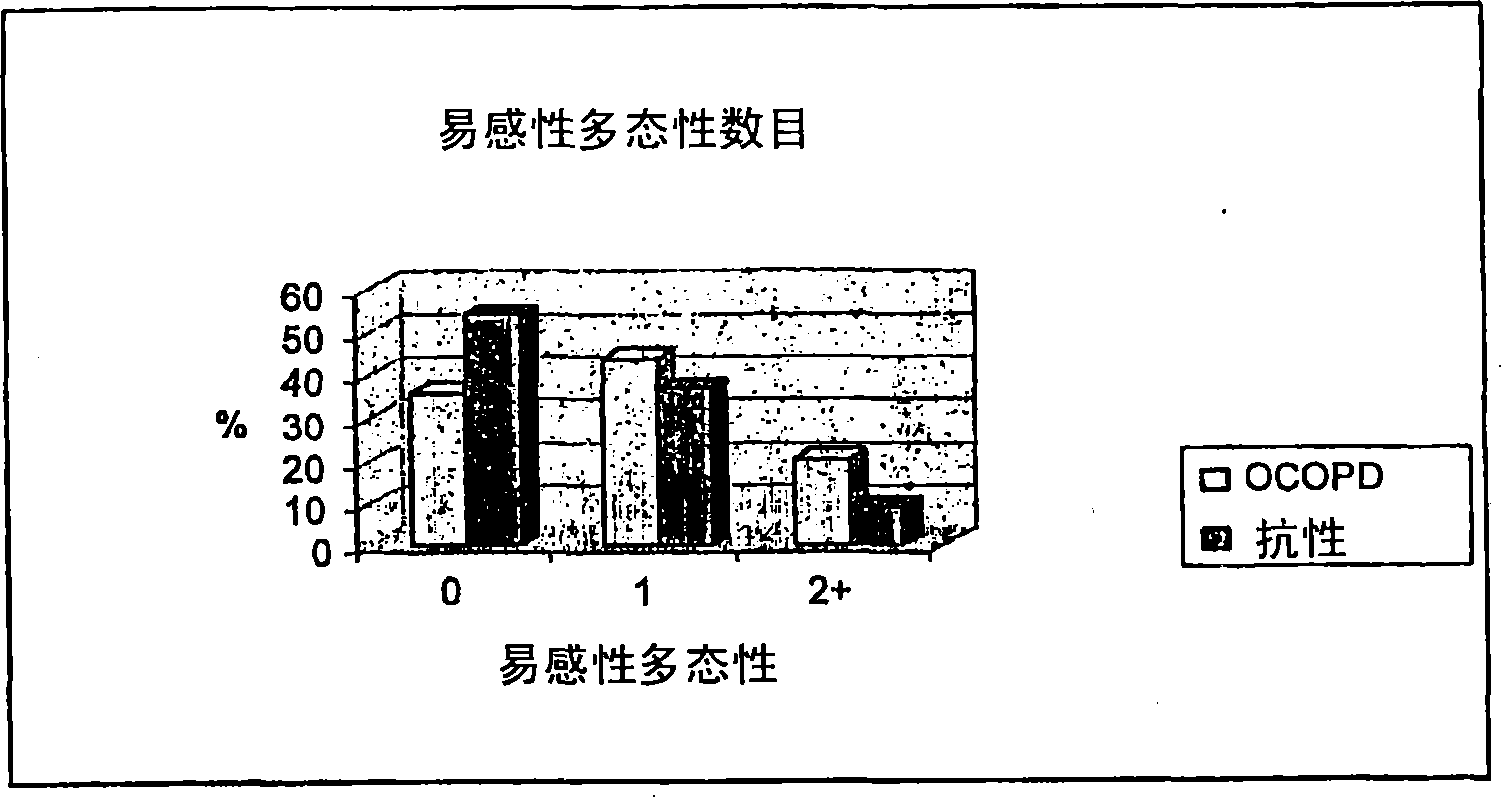Methods and compositions for assessment of pulmonary function and disorders
A pulmonary disease, coding technology, applied in the direction of biochemical equipment and methods, microbial determination/examination, etc., can solve the problems of not preventing dyspnea, not significantly changing the natural history of OCOPD, respiratory failure, etc.
- Summary
- Abstract
- Description
- Claims
- Application Information
AI Technical Summary
Problems solved by technology
Method used
Image
Examples
Embodiment 1
[0298] Case association study
[0299] method
[0300] Symbolic call
[0301]Identify European subjects who have been exposed to long-term smoking (minimum 15 pack years) and air pollutants (hazardous dust or smoke) in the work environment from the respiratory clinic. After testing the vital capacity, enlist those subjects with chronic obstructive pulmonary disease (COPD), whose forced expiratory volume (FEV1) within one second accounts for less than 70% of the predicted value, FEV1 / FVC (forced expiratory volume within one second / Forced vital capacity) ratio <79% (measured using American Thoracic Society standard). 139 subjects were recruited, 70% of whom were male, the average FEV1 / FVC (± standard error) was 54% (SD 15), and the average FEV1 as a percentage of the predicted value was 46 (SD 19). The average age, number of cigarettes per day and annual pack history were 62 years old (SD 9), 25 cigarettes per day (SD 16) and 53 pack years (SD 31), respectively. We also studied 11...
Embodiment 2
[0454] Table 21 below shows representative examples of polymorphisms in linkage disequilibrium with the polymorphisms described herein. Examples of these polymorphisms can be located using public databases, such as www.hapmap.org . The described polymorphisms are shown in parentheses.
[0455] Table 21: Polymorphisms reported to be in linkage disequilibrium (LD) with the polymorphism described in this article
[0456] COX2
[0457] rs7527769
rs689465
rs4648270
rs7550380
rs12027712
rs12759220
rs2206594
rs689466
rs20430
rs6687495
rs2745558
rs4648271
rs6681231
rs3918304
rs11567825
rs13376484
rs20415
rs4648273
rs12064238
rs20416
rs16825748
rs10911911
rs4648254
rs4648274
rs12743673
rs11567815
rs16825745
rs10911910
rs20417(-765G>C)
rs20432
rs12743516
rs20433
rs10911909
...
PUM
 Login to View More
Login to View More Abstract
Description
Claims
Application Information
 Login to View More
Login to View More - R&D
- Intellectual Property
- Life Sciences
- Materials
- Tech Scout
- Unparalleled Data Quality
- Higher Quality Content
- 60% Fewer Hallucinations
Browse by: Latest US Patents, China's latest patents, Technical Efficacy Thesaurus, Application Domain, Technology Topic, Popular Technical Reports.
© 2025 PatSnap. All rights reserved.Legal|Privacy policy|Modern Slavery Act Transparency Statement|Sitemap|About US| Contact US: help@patsnap.com



